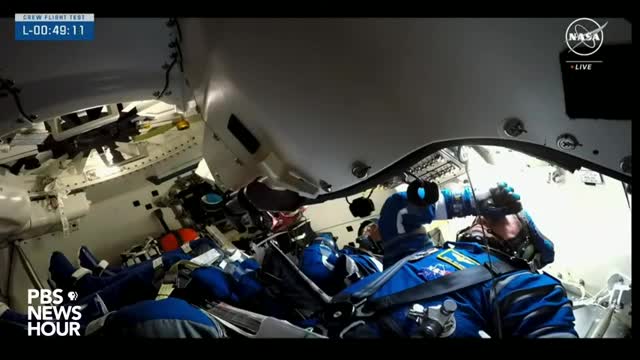NASA prepares for Starliner launch amid helium leak concerns

This article was created by AI summarizing key points discussed. AI makes mistakes, so for full details and context, please refer to the video of the full meeting. Please report any errors so we can fix them. Report an error »

NASA officials provided an update on the upcoming launch of the Starliner spacecraft, addressing concerns about a minor helium leak detected in the system. During a recent meeting, representatives emphasized that the leak is small and manageable, with the spacecraft capable of handling multiple leaks without compromising safety. NASA's risk assessment concluded that the current situation does not pose a significant threat, allowing the mission to proceed as planned.
The Starliner team has implemented extensive monitoring and contingency procedures to ensure the safety of the crew during the test flight. They noted that similar helium leaks have occurred in past missions without incident. The spacecraft is set to launch at 12:25:40 PM Eastern Time, with mission control closely tracking the countdown and readiness of the crew.
As the launch approaches, key milestones have been outlined for the ascent phase, including the roll program initiation and the maximum dynamic pressure point, known as max q. The solid rocket boosters will provide the initial thrust before being jettisoned, allowing the spacecraft to continue its journey to orbit. Starliner is expected to reach orbit approximately 11 minutes and 58 seconds after liftoff, followed by a series of operational maneuvers as it heads toward the International Space Station.
The team remains optimistic about the mission, with preparations for the crew nearing completion. The focus now shifts to ensuring a smooth launch and successful ascent, with all systems being monitored closely to address any potential issues that may arise.
The Starliner team has implemented extensive monitoring and contingency procedures to ensure the safety of the crew during the test flight. They noted that similar helium leaks have occurred in past missions without incident. The spacecraft is set to launch at 12:25:40 PM Eastern Time, with mission control closely tracking the countdown and readiness of the crew.
As the launch approaches, key milestones have been outlined for the ascent phase, including the roll program initiation and the maximum dynamic pressure point, known as max q. The solid rocket boosters will provide the initial thrust before being jettisoned, allowing the spacecraft to continue its journey to orbit. Starliner is expected to reach orbit approximately 11 minutes and 58 seconds after liftoff, followed by a series of operational maneuvers as it heads toward the International Space Station.
The team remains optimistic about the mission, with preparations for the crew nearing completion. The focus now shifts to ensuring a smooth launch and successful ascent, with all systems being monitored closely to address any potential issues that may arise.
View full meeting
This article is based on a recent meeting—watch the full video and explore the complete transcript for deeper insights into the discussion.
View full meeting